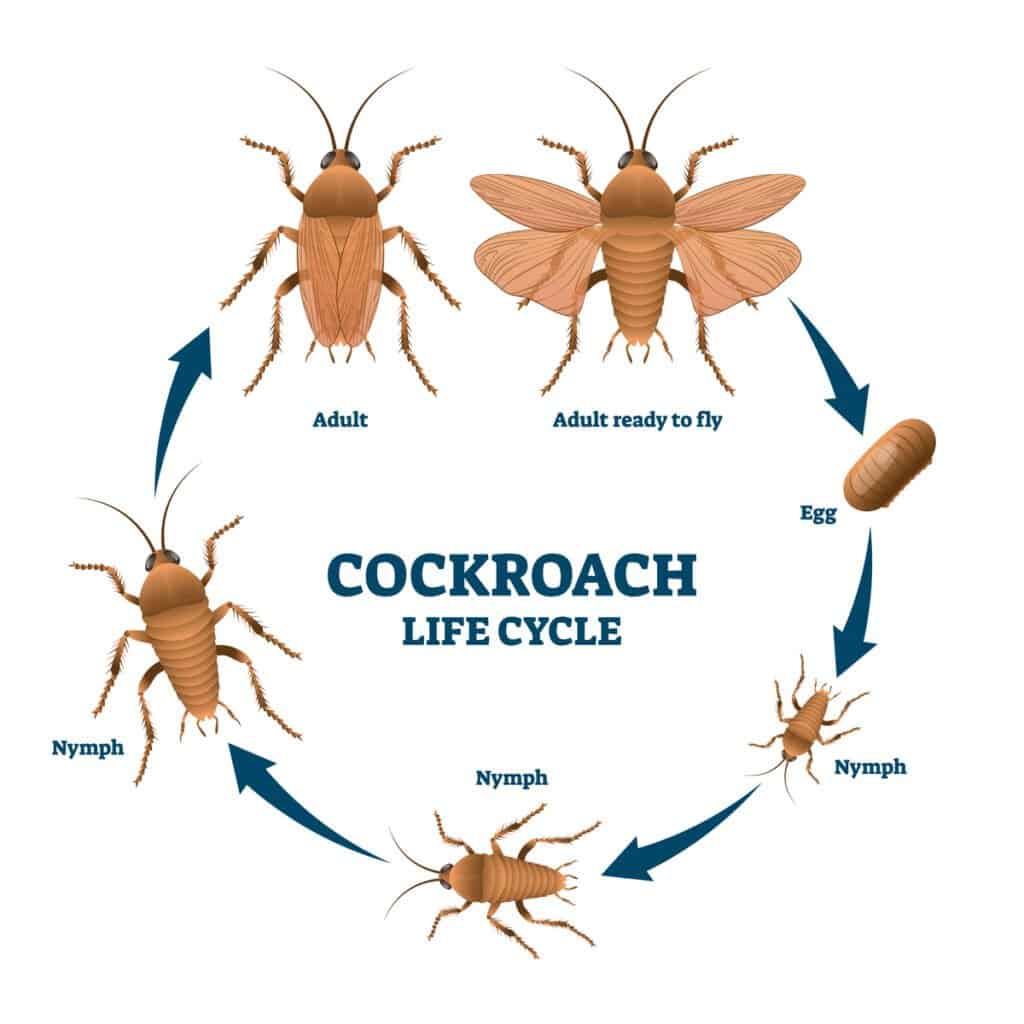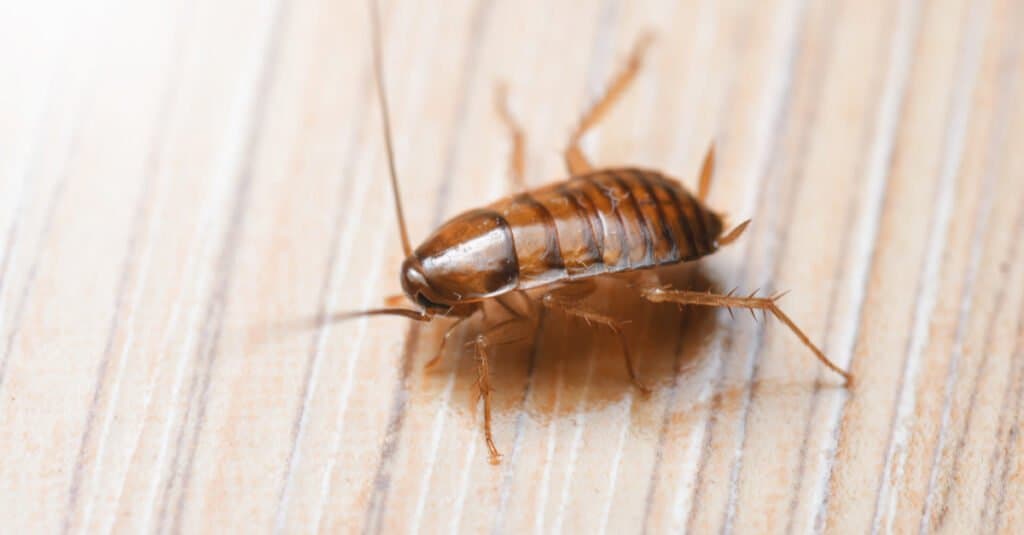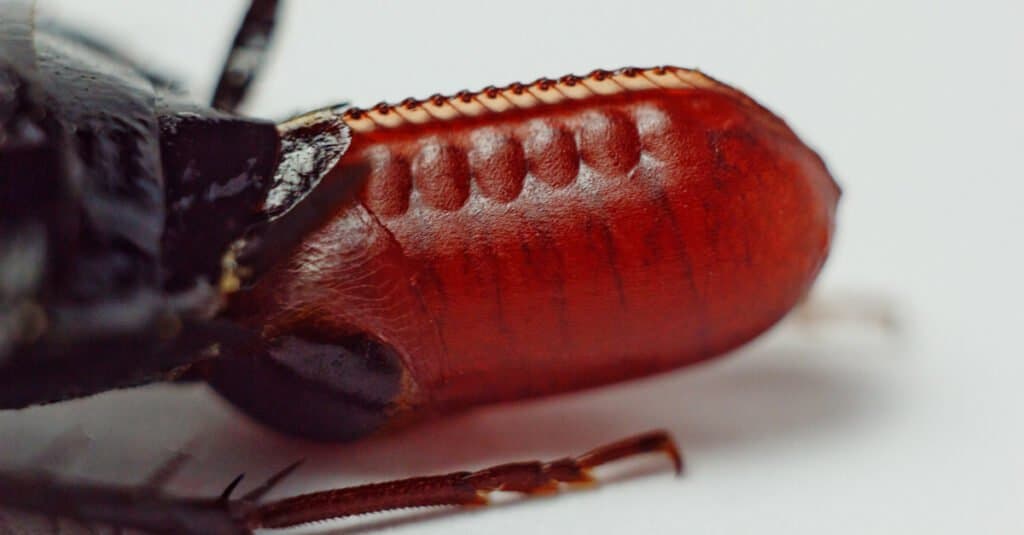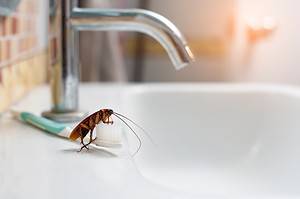Cockroaches can be found on every continent except Antarctica. They thrive in almost every climate, and live everywhere from sandy deserts to boreal forests. Their name derives from the Spanish ‘cucaracha’, though they’re interchangeably known as both ‘cockroaches’ and ‘roaches’. Cockroaches have three distinct stages of life; egg, nymph, and adult. Adults look different from nymphs, but—just what do cockroach nymphs look like?
Here, we’ll answer that question, and learn a little more about just what defines a cockroach nymph. We’ll go over how to tell a nymph from an adult, where nymphs come from, and what they look like. Then, we’ll take a look at the nymphs of some of the most common species of cockroach in the United States. Finally, we’ll learn more about what you should do if you find a cockroach nymph, and how to avoid infestations in the first place.
What Is a Cockroach Nymph?

©VectorMine/Shutterstock.com
Unlike many other bug species, cockroaches do not have larvae. They move from eggs to being nymphs.
Nymphs are young cockroaches that have hatched from their eggs, but haven’t attained adulthood yet. They’re sort of like human children and teenagers. Except, when a cockroach nymph grows bigger, it actually sheds its exoskeleton, and grows a newer, bigger exoskeleton. Depending on the species, a nymph may go through this molting process up to eight times before it reaches adulthood.
Once the nymph becomes an adult, it won’t shed its exoskeleton anymore. Adults are done growing, and have no need to grow new exoskeletons. Nymphs are usually born in clutches of at least eight per egg case, and there may be many egg cases in a single nest. Studies have shown that, when they’re around other young cockroaches, nymphs actually reach adulthood faster than they would if they were on their own.
Where Do Nymphs Come From?

Cockroach nymphs look like smaller, lighter colored versions of the adults
©iStock.com/Dmitriydanilov
Different species of cockroach lay their eggs in distinct ways. Some species, like the Australian rhinoceros cockroach, are ovoviviparous, and actually keep their eggs inside their bodies while the young develop. The nymphs hatch inside the mother, and she gives birth to live young.
Other species of cockroach lay their eggs in egg cases outside their bodies. The egg cases look like tiny, dried kidney beans. Some species, like the American cockroach, leave their egg cases in safe places for the eggs to incubate. Other species, like the German cockroach, carry the egg cases with them until the eggs are ready to hatch. Depending on the species, there may be up to 50 eggs per case, and they may take as little as four days to hatch.
What Do Nymphs Look Like?

Cockroach nymphs are similar to adults but smaller and in many species have undeveloped wings.
©bamgraphy/Shutterstock.com
In general, nymphs are smaller than adults, and almost white in color. They’re often mistaken for albino cockroaches (which are really just nymphs who haven’t developed their adult coloring yet). Like the adults, they have six legs and two long antennae. In winged species, nymphs don’t get their wings until adulthood.
Nymphs are also softer than the adults, hence their lighter color. They don’t have hard exoskeletons, which is why they’re so pale. With the hard outer shell comes the dark brown, classic cockroach color. Let’s take a closer look at what different cockroach nymphs look like.
German Cockroach Nymphs
German cockroach nymphs are tiny; less than ½ inch long. They’re very light colored, and have a yellow stripe down their back. Usually, they take about four months to mature into adult German cockroaches. 30-50 nymphs hatch per egg case, and adult females can produce 6-8 egg cases in their lifetime.
American Cockroach Nymphs
American cockroach nymphs emerge from tiny, reddish brown egg cases that look like kidney beans. They’re usually under 1 ½ inches long and have a light reddish brown color similar to that of the adults. Their antennae are extremely long compared to their long, thin bodies. After incubating for only four days, American cockroach nymphs take a long time to reach adulthood; up to a year.
Brown-Banded Cockroach Nymphs
Brown-banded cockroach nymphs incubate in their egg cases for 70 days. Females glue the egg cases to the undersides of furniture or warm electrical appliances. Like the adults, nymphs have alternating dark brown and tan bands running the length of their bodies. When they’re young, they have two distinct, horizontal, light bands across their thoraxes.
What To Do If You Find a Cockroach Nymph

Cock roach egg cases are quite large compared to their bodies.
©Yuliia Hurzhos/Shutterstock.com
Cockroach nymphs look like tiny, pale versions of adult cockroaches. If you see nymphs, egg cases, shed exoskeletons, or droppings—you may have a cockroach infestation. Depending on the severity, you may want to call a professional pest exterminator to take care of the problem.
There are also methods for getting rid of cockroach infestations on your own. The first of these is to use pesticides, like boric acid, to kill the roaches. You can also place glue traps where you’ve seen the cockroaches. Traps are best placed at the bases of walls, under furniture, near plumbing fixtures, and in areas with evidence of cockroaches.
Preventing Infestations
Unfortunately, if you see a cockroach nymph, it’s likely that an infestation has already taken hold. Out of all the life stages—egg, nymph, and adult—nymphs are the most populous. This is because not all nymphs make it to adulthood. They’re quick to colonize places that provide them with dark, warm places to hide, and food to eat.
There are many things home and business owners can do to prevent nymphs from hatching and spreading. First, it’s important to quickly clean up and dispose of all garbage and food scraps. Don’t leave food out, and clean up things like dirty dishes and messes immediately. It’s also important to reduce the number of places cockroaches have to hide by cleaning up clutter and keeping storage areas clean. Cockroaches love corrugated cardboard, so it’s a good idea to keep things in plastic totes, rather than cardboard boxes.
The photo featured at the top of this post is © iStock.com/ViniSouza128
Thank you for reading! Have some feedback for us? Contact the AZ Animals editorial team.







